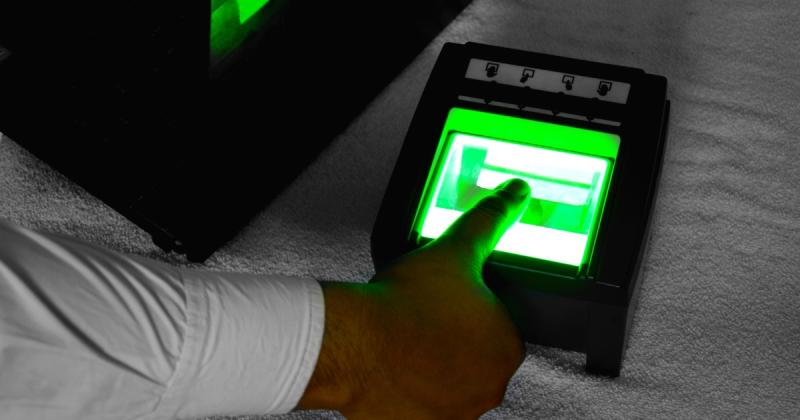Live Scan Fingerprinting: What to Expect and How to Prepare

In an increasingly security-conscious world, live scan fingerprinting has become a standard practice for background checks across various industries, from government positions and childcare services to real estate licensing and volunteer roles. Unlike traditional ink fingerprinting, live scan fingerprinting is a digital, ink-free process that offers a faster, more accurate, and more convenient way to capture fingerprints. If you’re preparing for a live scan fingerprinting appointment, understanding what to expect and how to prepare can help make the process smooth and efficient.
1. What Is Live Scan Fingerprinting?
Live scan fingerprinting is an electronic method of capturing fingerprints in a digital format, using a scanner instead of ink. The digital fingerprints are then securely transmitted to government databases for background checks, ensuring a quicker response time compared to traditional ink fingerprinting. Because of its reliability and efficiency, live scan is widely used in the United States for verifying identities and checking criminal histories as part of pre-employment, licensing, and other background verification processes.
2. When and Why Do You Need Live Scan Fingerprinting?
There are various situations where live scan fingerprinting may be required:
Employment Background Checks: Many employers, especially those in healthcare, education, and law enforcement, mandate live scan fingerprinting to ensure the safety of vulnerable populations.
Professional Licenses: Licensing agencies, such as those for real estate agents, notaries, and security personnel, require fingerprinting to verify that applicants meet security and legal standards.
Volunteer Work: Organizations, especially those involving children or the elderly, often need volunteers to complete live scan fingerprinting for safety reasons.
Adoptions: In adoption cases, live scan fingerprinting helps ensure that individuals or couples meet all required background criteria.
Immigration: For certain immigration processes, live scan may be used to authenticate identity.
3. What to Expect at Your Live Scan Appointment
Once you’ve scheduled your live scan fingerprinting appointment, here’s what you can typically expect during the process:
Verification of Identity: Upon arrival, you’ll need to present a valid, government-issued photo ID. Accepted forms of identification usually include a driver’s license, passport, state ID, or military ID.
Electronic Scanning Process: The technician will guide you through the fingerprint scanning process, which usually involves placing your fingers and thumbs on a digital scanner. The scanner captures images of each fingerprint in high detail, avoiding the mess and inaccuracies of ink-based fingerprinting.
Submission to Authorities: After your fingerprints are captured, they are electronically submitted to the relevant government or licensing agency, such as the Department of Justice (DOJ) or the Federal Bureau of Investigation (FBI). Processing times vary depending on the agency but are generally quicker than traditional methods.
4. How to Prepare for Your Live Scan Appointment
Being well-prepared can help ensure that your live scan fingerprinting appointment is quick and stress-free. Here are some tips:
Bring Required Identification: Make sure you have the correct government-issued photo ID, as the process cannot proceed without valid identification.
Know the Specific Requirements: Requirements can vary by agency or state, so confirm the details with the agency requesting your fingerprints. Some agencies may require you to fill out specific forms in advance.
Prepare Payment: Some live scan locations charge a fee, which may include fees for both the scanning service and government processing. Check with your location ahead of time to confirm accepted payment methods.
Moisturize if Needed: Dry hands can make scanning difficult, as the scanner relies on clear, defined fingerprint images. Using a small amount of lotion on your hands a few hours before the appointment can improve image clarity. Avoid excess lotion or greasy hands, as this can interfere with the scanner.
Relax Your Hands: During scanning, relax your hands and fingers, and follow the technician’s guidance to ensure all prints are captured clearly.
5. Understanding the Results and Next Steps
After the live scan process is complete, your fingerprint data is securely transmitted to the required agencies for background checking. In most cases, you won’t receive the results directly; instead, they are sent to the organization or agency that requested the check. Processing times vary by agency and can take anywhere from a few days to several weeks. If any issues arise, such as unclear prints, you may be contacted to reschedule or re-submit your fingerprints.
6. Benefits of Live Scan Fingerprinting
Live scan fingerprinting offers a range of benefits compared to traditional ink methods, including:
Greater Accuracy: Live scan captures highly detailed images, reducing the likelihood of unreadable or smudged prints.
Faster Processing Times: Digital submissions reach agencies instantly, allowing for quicker background checks.
Environmentally Friendly: By eliminating the need for ink, live scan fingerprinting is a more eco-friendly option.
Conclusion
Live scan fingerprinting is a safe, efficient, and accurate way to complete background checks for various needs. By understanding what to expect and how to prepare, you can make the process seamless and hassle-free. Remember to bring valid identification, check for specific requirements, and prepare your hands for a smooth scanning experience. Whether it’s for a job, licensing, or volunteer work, live scan fingerprinting plays an essential role in maintaining security and trust in today’s society.

Comments